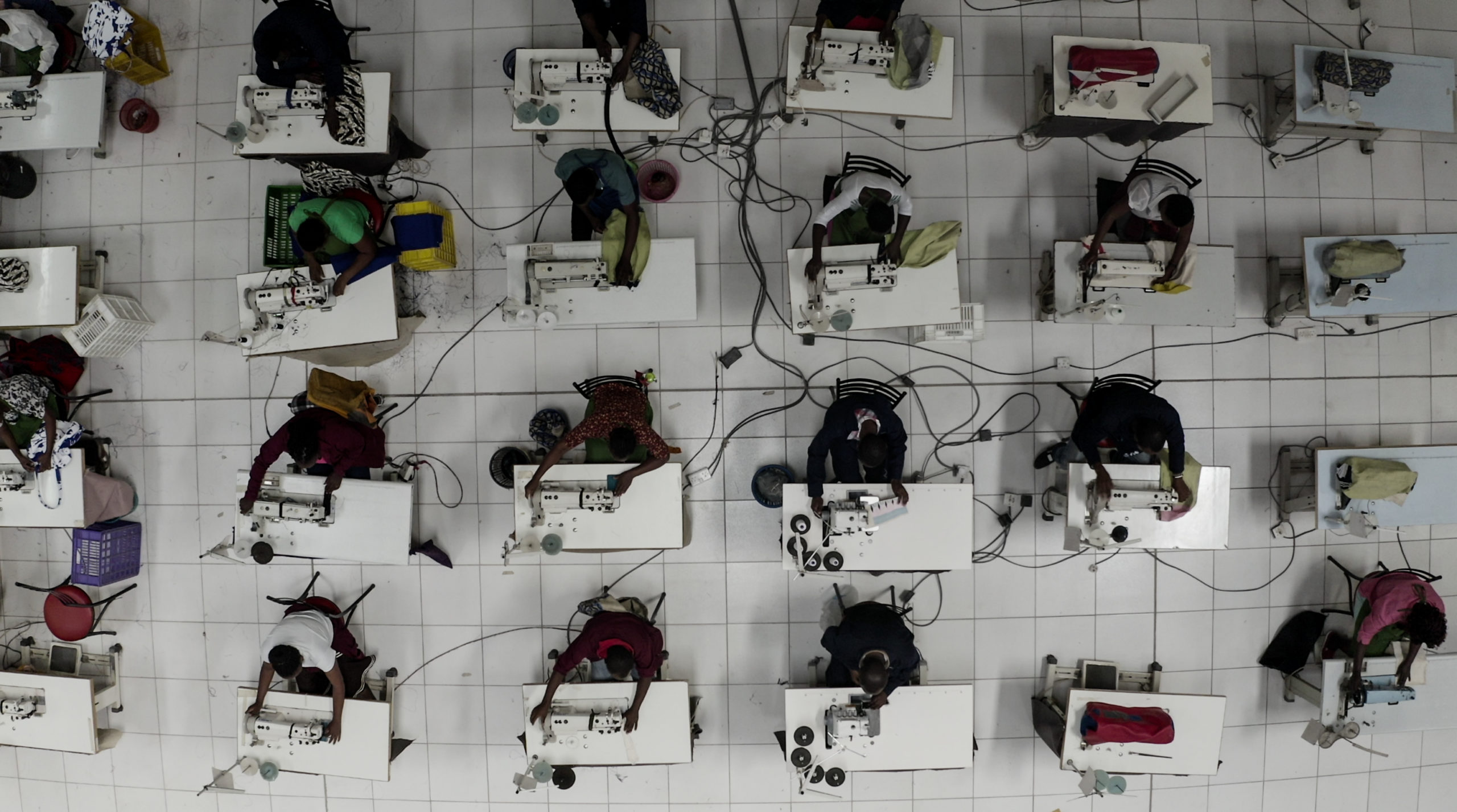In the wake of the coronavirus pandemic, United Nations member States, supported by the UN Alliance for Sustainable Fashion, can build back better the global fashion industry, turning it from a social, economic and environmental concern to a driver for achieving Sustainable Development.
The novel Coronavirus disease (COVID19) has immensely impacted all social and economic sectors, including fashion. The fashion industry is one of the biggest sectors in the world, generating $2.5 trillion annual revenues before COVID19. In the near-term, measures taken to slow the spread of the COVID19, coupled with the illness, has led to the closure of retail stores, lost jobs and declining production across the global supply chain. [Just-Style. “Timeline: Timeline – How coronavirus is impacting the global apparel industry”. Cited in ILO Sectoral Brief (8 April 2020)
The International Labour Organization (ILO) reported in April 2020 that an estimated 200 factories in Cambodia have suspended or reduced production reporting job loss at 5,000, for example. In the European Union, the textile and apparel sector projects to face a potential 50% drop in sales for 2020. [Just Style, “Europe’s textile & apparel sector facing 50% drop in sales”.] By one estimate, a two-month closure of stores would place 80% of publicly listed fashion companies in Europe and North America in financial distress.
The pandemic could affect the fashion industry
Long-term, the pandemic could affect the composition of the industry’s supply chains and trade and consumption. The industry was already under intense scrutiny for its unsustainable business model (“fast fashion”) and poor social and environmental performance. The trajectory of fashion before COVID19 collided with globally agreed sustainable development targets.
Apparel and footwear were calculated in 2017 to generate 8.1% of the total greenhouse gas emissions (equivalency). Greenhouse gas emissions had been forecast to increase by more than 60% by 2030. [Ellen MacArthur Foundation (2017), A New Textile Economy.] Global loadings of greenhouse gases need to be 55% lower by 2030 than in 2018 to meet the Paris Agreement on achieving a carbon-neutral economy by 2050.
COVID19 does not provide a ‘silver lining’ for the environment, but it provides the impetus to revisit our relationship with nature and build a better world. [United Nations Environment Programme (May 2020), Working with the environment to protect people: UNEP’s Covid-19 response.]
COVID19 has accelerated the transformation of fashion
Some trends in the fashion industry already underway will accelerate in the aftermath of COVID19. Consumers were already shifting in certain directions. In McKinsey’s The State of Fashion 2020: Coronavirus Update (April 2020), Business of Fashion analysts review how “the coronavirus presents fashion with a chance to reset and completely reshape the industry’s value chain. “The quarantine of consumption,” Business of Fashion analysts believe, “could accelerate some of these consumer shifts, such as a growing antipathy toward waste-producing business models and heightened expectations for purpose-driven, sustainable action.”
The industry is seeking to share data, strategies and insights on how to navigate a post-COVID marketplace. Social distancing and lockdowns have elevated consumers demands on digital use forcing companies to adjust to meet the demand. Virtual and digital fashion shows have replaced the traditional interactions affecting employment while boosting technology.
Governments can shape this transformation to digital commerce for the public good
States that support education and training programmes, business innovations and access to finance for small- and medium-sized enterprise can foster more rapid uptake of the new economic opportunities digital presents.
Within the UN, ILO is identifying ways on how the fashion industry could recover to a more resilient and sustainable industry. UNEP’s response will focus on reaching real economy actors to rebuild, scale up and accelerate sustainable consumption and production, and create new green jobs. The UN Alliance for Sustainable Fashion aims to change the path of fashion from a social, economic and environmental concern to a driver for achieving Sustainable Development.
The COVID19 pandemic has exposed many fragilities in our economies, and deepened existing inequalities, while emphasizing the need for resilience, innovation and cooperation. United Nations agencies and their partners need to understand how COVID19 has accelerated the transformation of fashion, to help Governments build back better an industry that will deliver a sustainable and just economy for all people and the planet.



